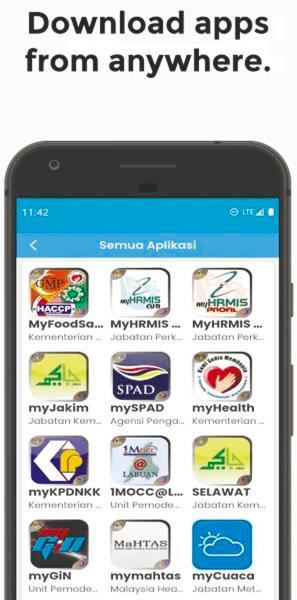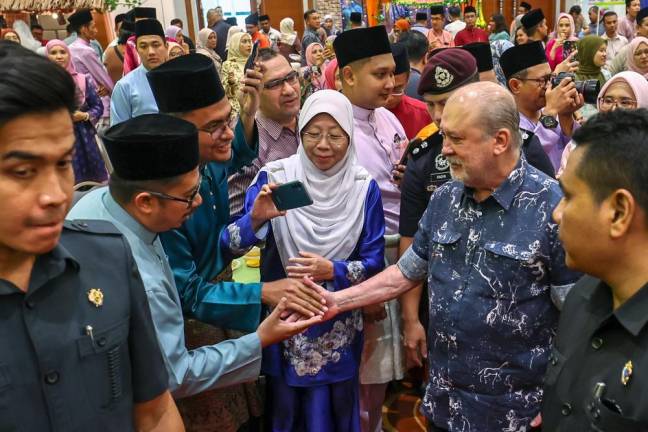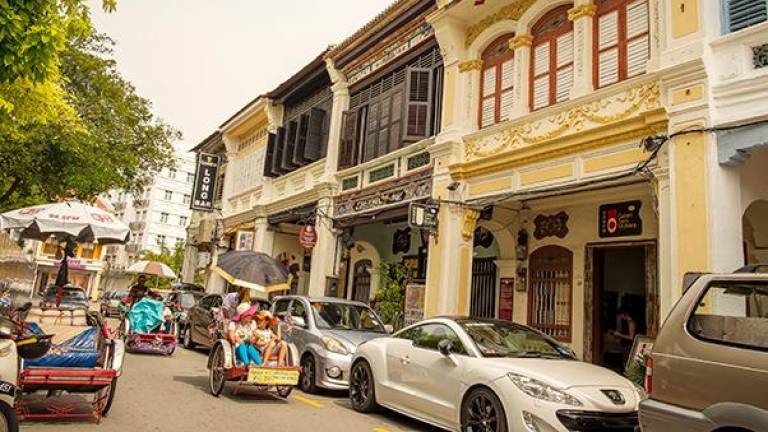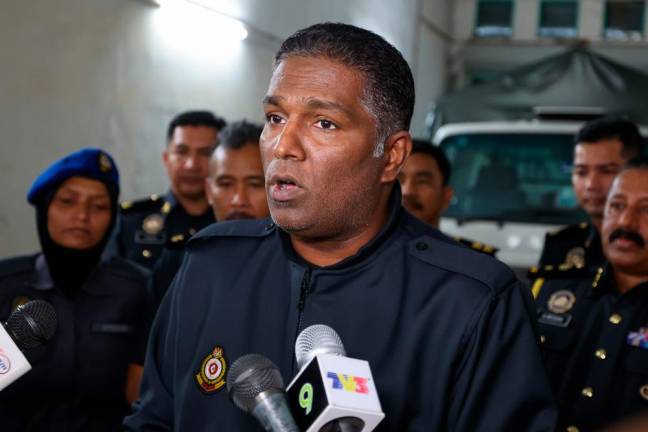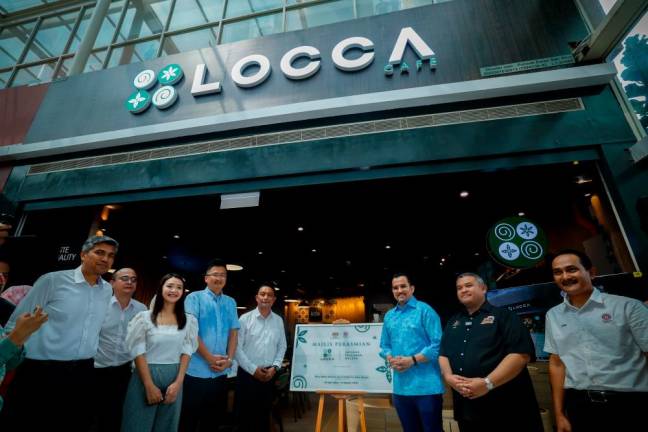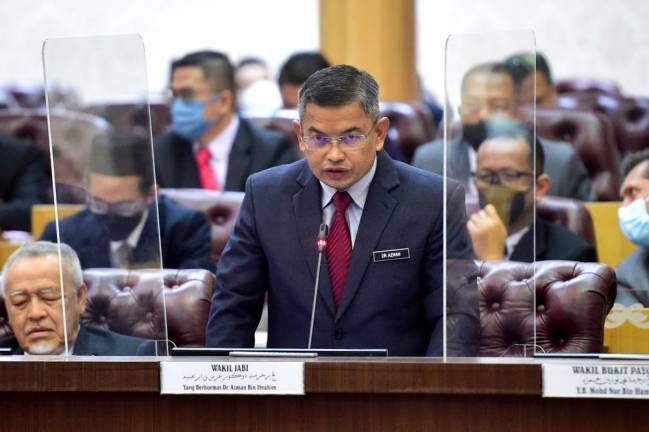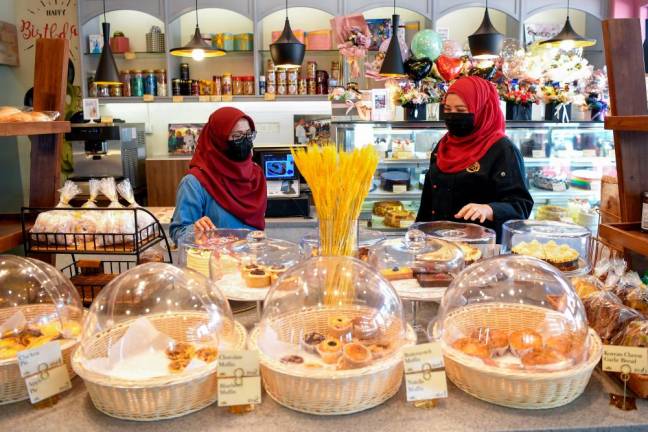LAST month, in a parliamentary reply to my colleague, Wong Shu Qi (MP for Kluang), the Prime Minister’s Department stated that there were more than 200 smart phone applications or “apps” which have been developed by 93 government agencies.
A full listing of these apps can be found at “Gallery of Malaysian Government Mobile Applications” or Gamma website (https://gamma.malaysia.gov.my/). There is even an app (Gammy.my) to list down all these applications.
After going through the ratings and descriptions of some of these apps, I arrived at the conclusion that just because an app is developed for a smart phone, it does not mean it is a “smart” app.
Here are some suggestions for the Malaysian Administrative Modernisation and Management Planning Unit (Mampu), which is under the Prime Minister’s Department overseeing ICT and Digitalisation related initiatives, to make government apps smarter, more user-friendly and effective.
1. Get rid of infrequently-used apps
Not everything needs to be put into an app for public use. Some apps have seen few downloads, while others seem to provide information that few people seem to want and which are not user friendly.
One such example is the “MYWC2U” app that was launched in October 2021, which gives locations to the nearest public toilets. This app received a rating of 1.7 out of five on Google Play Store, with one review stating that the app is “the most redundant thing ever”.
If someone is in a hurry to use a toilet, my guess is that the person will try to find the nearest petrol station or mamak shop using his smartphone rather than use the MYWC2U app.
Mampu can easily determine which of the 200 apps have not been frequently downloaded and used, and ask the relevant agency to either delete these apps or improve and make them more relevant for public use.
My own research shows that 97 out of the 200 apps have been downloaded less than 1,000 times or not frequently used.
Mampu should provide recommendations to the various ministries and agencies on whether an app is needed or if it is better for the information to be only displayed on the website.
For news notifications, it may be better to use other existing apps such as Telegram rather than develope a stand-alone app.
2. Make sure it fulfils its function
This may seem like a redundant advice, but it is, nonetheless, important to emphasise.
For example, “I-Kredikom” is an app that was created by the Housing and Local Government Ministry to provide a list of licensed moneylenders, and for the public to make complaints on any misconduct or unfair practices by moneylenders.
But ironically, this app – which received a rating of 3.4 – has been infiltrated by scammers who have managed to list themselves on the app, as indicated by many of the reviews.
This is a clear example of inefficiency on the part of the people in charge of rolling out the app at the ministry, for failing to follow up and doing the necessary due diligence accordingly.
3. Listen and respond to feedback
When an app has been downloaded more than a 1,000 times and has received more than 100 ratings, the feedback will be a fairly accurate representation of how useful and user-friendly the app is. The ministry or government agency in question must review the feedback and take necessary steps to respond and rectify issues accordingly.
For example, UPU Pocket is an app which has been downloaded more than 500,000 times by students and parents of students who are applying or have applied for entry into public institutions of higher learning. The rating of this app is a miserable 2.9 and it has more than 1,000 reviews, most of which are negative. There is no official response to these complaints in the review section.
The MyHRMIS mobile app, which has been downloaded more than a million times, is frequently used by civil servants for human resources purposes, such as to apply and check their leaves. It has a rating of 4.5 and more than 7,000 reviews. Even though not all the reviews are positive, whenever a suggestion is given by a reviewer, there is a response from the app developer.
4. Update apps regularly
Apps, especially those with a high level of usage, should be updated regularly to fix bugs in the system, increase functionality and respond to user feedback. The above-mentioned MyHRMIS app was updated recently in August.
In contrast, an app called “MyKafeTeen”, which has been downloaded more than 5,000 times and has a high rating of 4.5, has not been updated since December 2019. This app, developed by Lembaga Penduduk dan Pembangunan Keluarga Negara or LPPKN – an agency under the Women, Family and Community Development Ministry – with the intention of helping teens connect with doctors and counsellors, could have been used better during the pandemic to provide counselling to teenagers. Additional functions could also have been added if the app was updated during the pandemic.
Of course, even when apps are updated regularly, this does not mean that its usage, user-friendliness and effectiveness have increased. For example, the MyPotholes app, developed by the Works Ministry, was recently updated in June, but only has 50 plus downloads and does not have enough ratings to register a score.
5. Ministers, deputy ministers, chief secretary should use apps
One way to ensure the respective ministries pay closer attention to the effectiveness of their own apps is to have the ministers, deputy ministers and the chief secretary to the government use these apps, especially during public events. This will lead to them experiencing what the users go through. Some of them may even read the reviews and take remedial action.
For example, it would be good to have the transport minister using the JPJeQ app to try to book an appointment at a Road Transport Department branch in his home state. This app, which was launched in Jan 2021, has had over 500,000 downloads and a rating of 2.6, with many users saying that the app cannot capture the GPS location of the user.
I must also take some responsibility for not looking into the MySaham2U app that was launched by the International Trade and Industry Ministry in January 2018 when I was the deputy minister. This app has been downloaded more than 10,000 times and has a poor rating of 2.6. The app is supposed to help those who have applied for bumiputra shares to keep track of their application.
6. Add useful functionality
Some apps have the potential to provide timely and useful information but because of the lack of functionality, they fail to fulfil their full potential. For example, the MyCuaca App, developed by the Malaysian Meteorological Department, has been downloaded over a 100,000 times but only has a rating of 3.2.
Among the complaints include poor location identification, the lack of hourly updates and poor notification options.
One can imagine how useful the app can be, especially nearing the monsoon season at the end of the year.
7. Better alternatives
Apps with poor ratings should be discarded and replaced with existing options that are available in the market.
For example, the “Sistem Janji Temu Klinik KKM”, which has been downloaded more than 100,000 times, has one of the poorest ratings among all the apps listed in the Gamma.my website: 1.2 out of five (with more than 1,000 reviews).
This type of appointment-booking app can easily be replicated using models that already work in private healthcare systems.
MySalesTracker, an app developed by the Domestic Trade and Consumer Affairs Ministry, is supposed to display notices of cheap sales in the country. Sadly, it has only been downloaded about 5,000 times and has a rating of 3.3.
Compare this with Hargapedia, an app that can be used for price comparison and online shopping for grocery, health and beauty products, which has been downloaded more than 500,000 times and has a rating of 4.2.
Would it not be better for the ministry to work together with private sector companies like Hargapedia (and others) to leverage on the reach and functionality of their apps rather than develop an underutilised app like MySalesTracker?
8. Maintain high standard
In cases where the processing of certain government-related services has been given to a private company, Mampu has the responsibility to make sure the service provided by these private companies are up to par.
For example, MyEG is a public-listed company that has a popular app, which has been downloaded more than a million times. But its rating is only 3.3, and recent reviews show a drop in the level of service.
9. Work with state governments
Mampu should also recommend that certain ministries, especially the Housing and Local Government Ministry and Works Ministry, work together with state governments (and local councils) to implement and improve public complaint-type or “e-aduan” apps.
There is no point for the Housing and Local Government Ministry to have its own “I-Tegur” app (rated 2.2, with 10,000 plus downloads) for complaints when most of them have to be channeled to the local councils. It would make sense for state governments to adopt the best practices at the national level for apps relating to public complaints, at local councils (“Pihak Berkuasa Tempatan”).
It has been a challenge for me to do so at the local council. It is hard to develop a well-functioning app to handle public complaints for the Kajang Municipal Council. Previous apps have failed to achieve their objective for a variety of reasons.
It makes sense for the Selangor state government to consolidate the complaints process using one app at the state level, similar to what has been done for the Smart Parking system under the Smart Selangor Delivery Unit. This parking app has been downloaded over 500,000 times and has a decent rating of 3.8. Of course, there is continued room for improvement, not just for the Selangor state government, but also for the Penang state government which has the Smart Parking app that has a rating of only 2.9. Better coordination between the federal and state governments will be helpful.
10. Adopt best practices from better rated apps
Again, Mampu can be the main coordinator to provide advice and consultation to governments and agencies at the state and federal level on some of the best practices, to make apps more user-friendly and functional.
11. Ensure data protection and privacy
Data privacy is important to assure users that their personal data stored on an app will not be misused or hacked or sold to a third party.
This is the challenge faced by MySejahtera. This can be a lost opportunity as MySejahtera can be used by the Health Ministry for many health-related projects e.g. tracking those with possible long Covid symptoms.
12. Find way to crosscheck validity of ratings
Last but not least, Mampu should find a way to limit the possibility of people “skewing” the ratings of apps because they want to artificially inflate it to make a ministry look good or because they want to depress the rating to make a ministry look bad.
Dr Ong Kian Ming is MP for Bangi. Comments: letters@thesundaily.com



